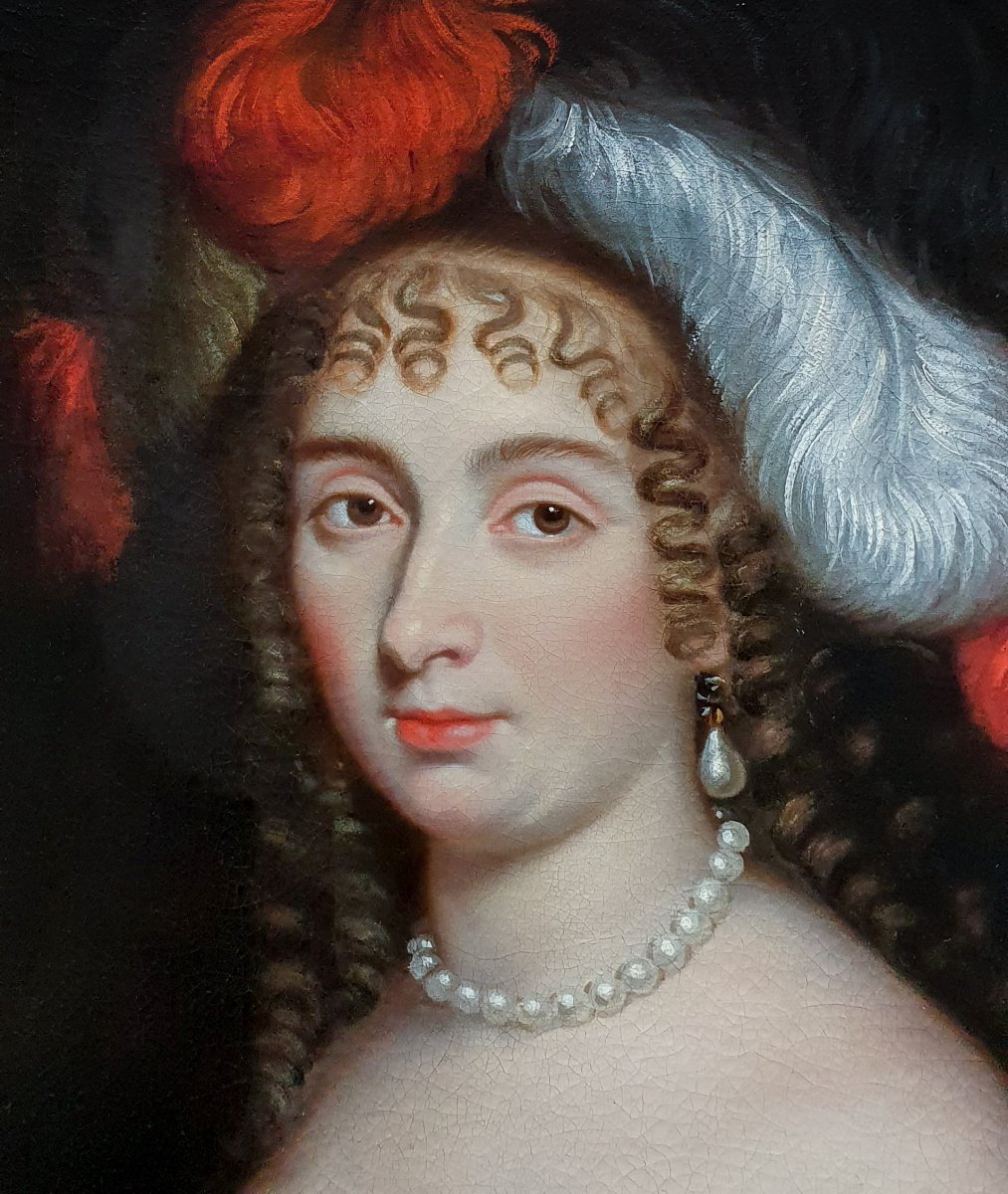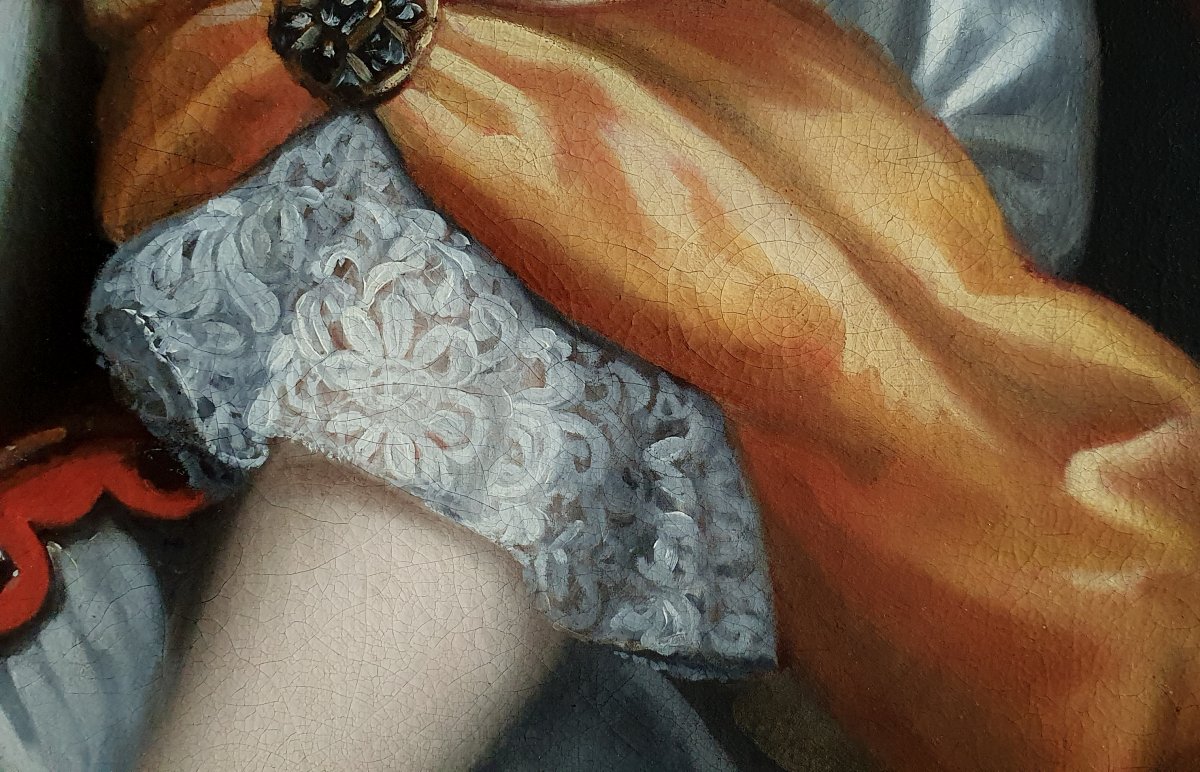"Portrait Of A Lady As Minerva C.1660; Circle Of Johannes Mytens (c.1614-1670); Antique Painting"
This magnificent grand scale portrait is a fine example of the Baroque portrait style in the 1660’s when in Europe it was fashionable for aristocratic women to be immortalised in the guise of mythological characters.By the 1640’s familiarity with the pastoral was so ingrained that the mere inclusion of such elements as shimmering gowns, plumed hats, flower garlands, and antique buildings suggested Arcadia to the viewer. Many artist’s specialised in these fanciful allegorical portraits such as the court painter Johannes Mytens, who was the most fashionable portrait painter working in The Hague during the middle of the seventeenth century.The subject is portrayed in classically inspired attire with draping fabrics, a crimson swath of fabric wrapped around her body and fastened at the shoulder with a large jewelled clasp, reminiscent of classical Roman attire. The metallic cuirass, spear, shield, book, and exotic feather headdress draw from traditional mythology which by the time this portrait was painted was well known as all educated individuals of the period were familiar with Latin and Greek poetry and the mythological world. This technique imbues the portrait with a sense of theatricality that is a close reflection of an elegant and sophisticated society in which this wealthy woman belonged to.
Here, we see Minerva, the Roman goddess of wisdom, protector of peace, and patroness of the arts and sciences. Minerva was a popular muse - she was fierce, and she was brilliant. The use of this guise thereby elevates the sitter to the status of a goddess. The exotic plumage perched on her head is part of a type of hunting cap that was a status symbol as the right to hunt had always been the exclusive privilege of the nobility. These exotic headdresses were often incorporated into portraits and they were neither meant as an exercise in realism nor to explore the sitter’s character, but to glorify the individual with godlike qualities and portray a tangible expression of power and wealth. The dramatic costume and the stormy skies behind heighten the sitter’s calm beauty. The whiteness of the skin is a distinctive mark of the sitter’s social status.
The accessory ‘par excellence’ is pearls and were very popular in Europe. They are worn as a necklace, in her costume, and as pear-shaped earrings called unions d’excellence reflecting the difficulty of finding perfectly matched pearls of such large size. They could range up to 20 millimetres in diameter. The jewellery is of course indicative of the family’s wealth and was an obligatory accompaniment. In England, the diarist Samuel Pepys accounted the purchase of a pearl necklace for his wife: “She was also to look after a necklace of pearl, which she is mighty busy about, I being contented to lay out 80 pounds in one for her” in 1665. In today’s money this is in excess of £10,000.
This portrait resembles closely other paintings attributed to Johannes Mytens which often present the sitter in the guise of a goddess in an outdoor setting. A smaller portrait, 114x90cm, “Portrait of a Woman in a Blue Dress, 1662” by Mytens sold for 24,800 euro on 21st May 2016 in Cologne. Similarly, a “Portrait of a lady as Diana, three-quarter-length, in an oyster satin dress, a bow in her left hand, her right resting on a hound's head, in a landscape” sold for £22,500 on 7th July 2017 at Christies London.
The artist was particularly adept at rendering the sitter's face and hands - they are remarkable. This grand scale portrait was intended to impress and does not fail at that.
Jan (or Johannes) Mytens (or Mijtens) came from a family of painters. He was born circa 1614 in The Hague and was buried on 24th December 1670. It is thought that his initial training may have been with his uncle Isaac Mijtens and after 1634 with his uncle Daniel. Jan was the son of Daniel’s elder brother David, a saddle-maker in The Hague. Daniel Mijtens the Elder, who had been court painter to Charles I in England, was strongly influenced by Anthony van Dyck as well as Peter Paul Rubens and Jan was most likely influenced by their distinctive elegant work. In 1642 Jan married Daniel’s daughter Anna. In 1639 he became a member of the Guild of St. Luke in The Hague and in 1656 one of its governors. He was also one of the founders of the painter’s society De Pictura in The Hague. One of his pupils was his son Daniel (who was a painter of portraits and mythological scenes).
Although he occasionally executed mythological and Biblical scenes, the majority of his output was devoted to portraiture. Jan Mytens’ clientele derived mainly from The Hague’s most prominent citizens, military commanders, high ranking government officials, nobility, and by the early 1660s Mytens began to work for members of the House of Orange.
Measurements: Height 149cm, Width 109cm, Depth 7cm framed (Height 58.75”, Width 43”, Depth 2.75” framed)



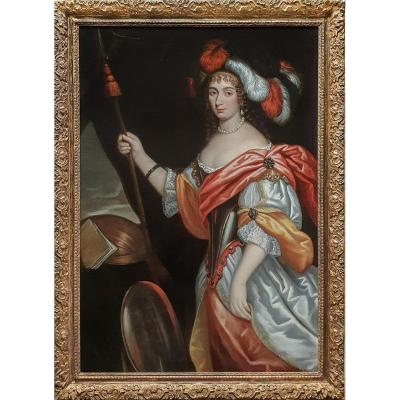

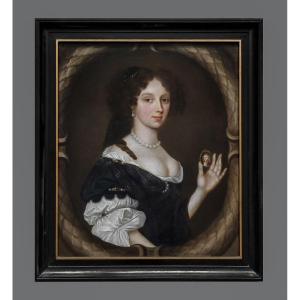
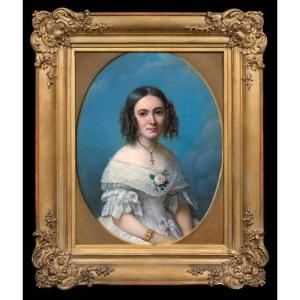






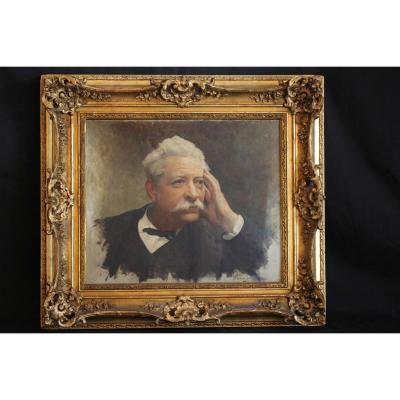






 Le Magazine
Le Magazine Rivista Artiquariato
Rivista Artiquariato TRÉSORS magazine
TRÉSORS magazine



